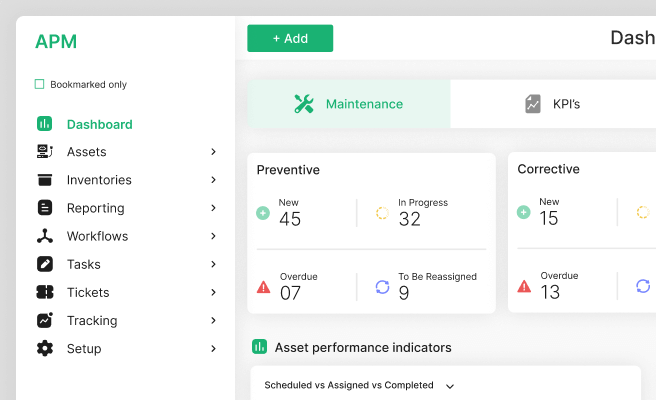User Experience (UX)
<p>User experience (UX) is a crucial aspect of digital product design, particularly for climate tech companies aiming to create impactful and sustainable solutions. UX encompasses all aspects of the end-user's interaction with a company, its services, and its products. A well-designed UX can significantly enhance user satisfaction, increase adoption rates, and drive positive behavior change.</p>
<p>In the context of climate tech, effective UX design can help users understand complex environmental data, engage with sustainable practices, and adopt new technologies that contribute to a cleaner planet. For instance, a carbon footprint tracking app must present data in an intuitive and engaging manner to encourage users to make more eco-friendly choices.</p>
<h2 id="2">Importance of User Experience in Product Design</h2>
<p>UX is not just about making products look good; it's about making them work well. For climate tech companies, this means designing products that are both user-friendly and aligned with sustainability goals. Good UX design can reduce operational costs by minimizing user errors and support requests, while also boosting credibility with partners, talent, and investors.</p>
<p>A prime example of effective UX in climate tech is Telsa's electric vehicle interface. The design is sleek and intuitive, providing users with essential information about battery life, energy consumption, and navigation in a visually appealing format. This not only enhances the driving experience but also promotes the adoption of sustainable transportation solutions.</p>
<h3 id="3">Components of User Experience</h3>
<p>Several key components contribute to a successful UX design:</p>
<ul>
<li><strong>Usability:</strong> Ensures the product is easy to use and navigate.</li>
<li><strong>Accessibility:</strong> Makes the product usable for people with various disabilities.</li>
<li><strong>Desirability:</strong> Engages users through visual and interaction design.</li>
<li><strong>Findability:</strong> Helps users locate information quickly and efficiently.</li>
<li><strong>Credibility:</strong> Builds trust and confidence in the product.</li>
<li><strong>Usefulness:</strong> Ensures the product meets user needs and adds value.</li>
</ul>
<h3 id="4">Challenges in Implementing UX Design</h3>
<p>Despite its importance, implementing effective UX design comes with challenges, particularly for climate tech companies:</p>
<ul>
<li><strong>Complex Data Visualization:</strong> Designing interfaces that make complex environmental data understandable and actionable.</li>
<li><strong>Limited Resources:</strong> Smaller companies may struggle to allocate sufficient resources for comprehensive UX design.</li>
<li><strong>User Diversity:</strong> Catering to a diverse user base with varying levels of technical proficiency and environmental awareness.</li>
</ul>
<h2 id="5">Best Practices for UX Design in Climate Tech</h2>
<p>To overcome these challenges, climate tech companies can adopt the following best practices:</p>
<ul>
<li><strong>User-Centered Design:</strong> Involve users in the design process through surveys, interviews, and usability testing to create products that meet their needs and preferences.</li>
<li><strong>Iterative Design Process:</strong> Continuously refine and improve the product based on user feedback and testing results.</li>
<li><strong>Data-Driven Decisions:</strong> Use real data to inform design decisions and validate assumptions. Tools like <a href="https://www.hotjar.com/" style="color:#2896FF; text-decoration:underline;">Hotjar</a> and <a href="https://www.optimizely.com/" style="color:#2896FF; text-decoration:underline;">Optimizely</a> can provide valuable insights into user behavior and preferences.</li>
</ul>
<h3 id="6">Real-World Example: Arcadia Power</h3>
<p><a href="https://www.arcadia.com/" style="color:#2896FF; text-decoration:underline;">Arcadia Power</a> is a climate tech company that offers clean energy solutions to consumers. Their user-friendly platform allows users to manage their energy usage, track their carbon footprint, and switch to renewable energy sources with ease. By prioritizing UX, Arcadia Power has made it simple and engaging for users to participate in the clean energy movement.</p>
<h2 id="7">Tools for UX Design</h2>
<p>Various tools can assist climate tech companies in creating effective UX designs:</p>
<ul>
<li><a href="https://www.sketch.com/" style="color:#2896FF; text-decoration:underline;">Sketch</a>: A popular tool for creating wireframes and prototypes.</li>
<li><a href="https://www.figma.com/" style="color:#2896FF; text-decoration:underline;">Figma</a>: A collaborative design tool that enables real-time editing and feedback.</li>
<li><a href="https://www.invisionapp.com/" style="color:#2896FF; text-decoration:underline;">InVision</a>: Useful for creating interactive prototypes and gathering user feedback.</li>
</ul>
<h3 id="8">Conclusion</h3>
<p>User experience is a critical component of successful product design, especially in the climate tech sector. By focusing on usability, accessibility, and user engagement, companies can create products that not only meet sustainability goals but also enhance user satisfaction and drive positive environmental behavior. Implementing best practices and leveraging the right tools can help overcome challenges and lead to the development of impactful, user-friendly digital solutions.</p> <p>If you’re looking for inspiration to elevate customer and user experience for enterprise-grade products, View our work with the Ministry of Health of Saudi Arabia for curating the UX of an <a href="https://www.whatifdesign.co/work/enterprise-software-for-hospitals" style="color:#2896FF; text-decoration:underline;">Asset Management Tracking Platform</a></p>
<p>Ready to get started? <a href="https://cal.com/akhilak/what-if-design?duration=30" style="color:#2896FF; text-decoration:underline;">Book a 1:1 consultation call</a> with us today.</p>

Let's scale your impact with great design.
Free consultation, no sales pitch
Thank you! Your submission has been received!
Oops! Something went wrong while submitting the form.
Let’s talk
Nothing great is built alone.
Let’s connect about your vision, our work and how we can collaborate.
Get in touch

